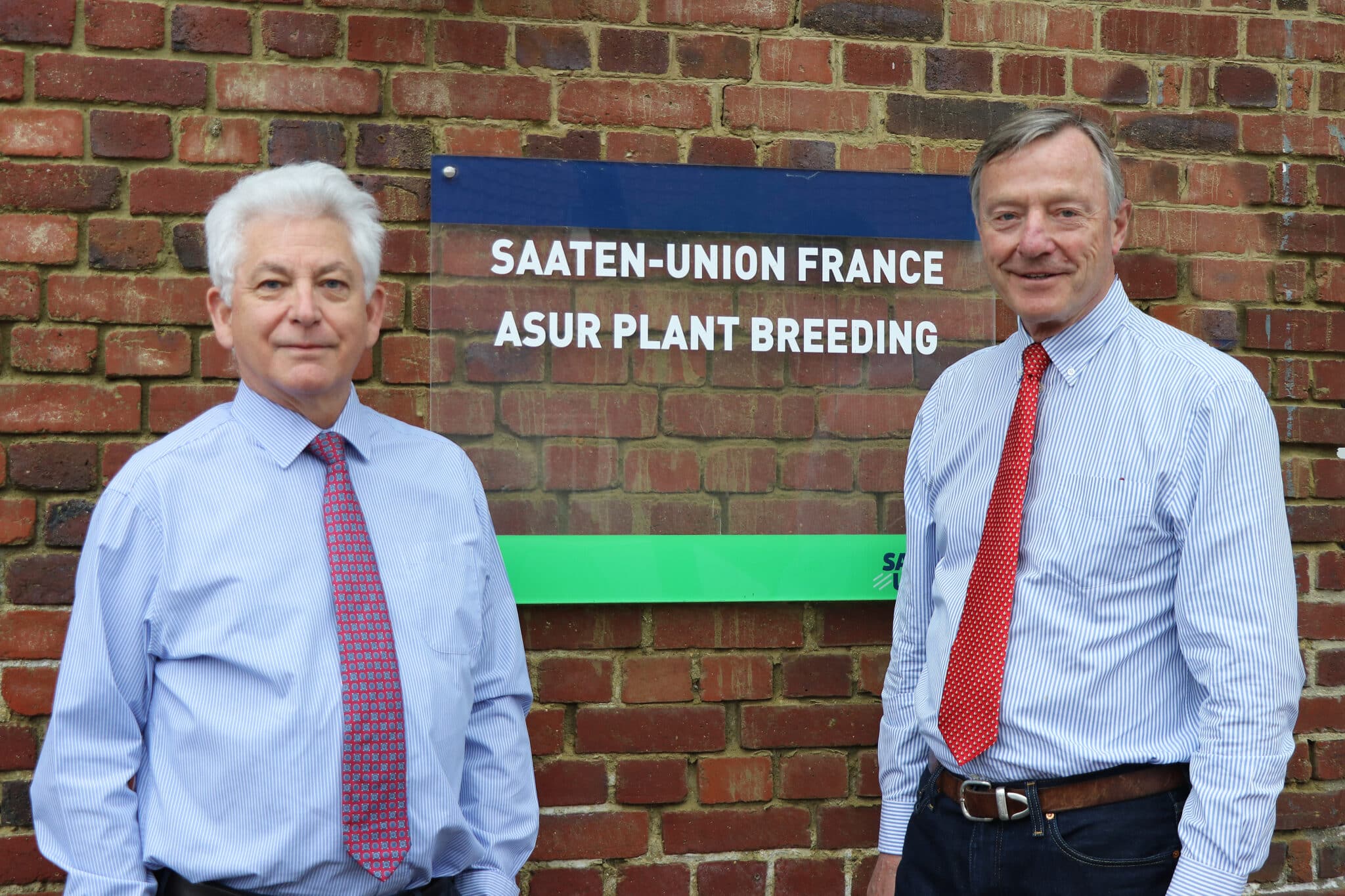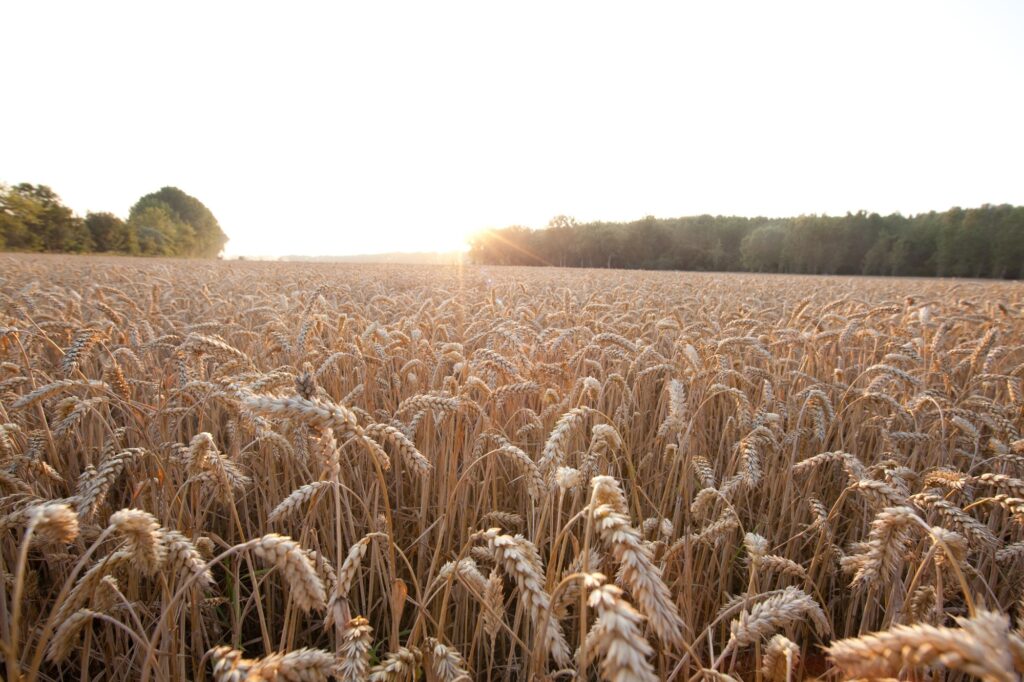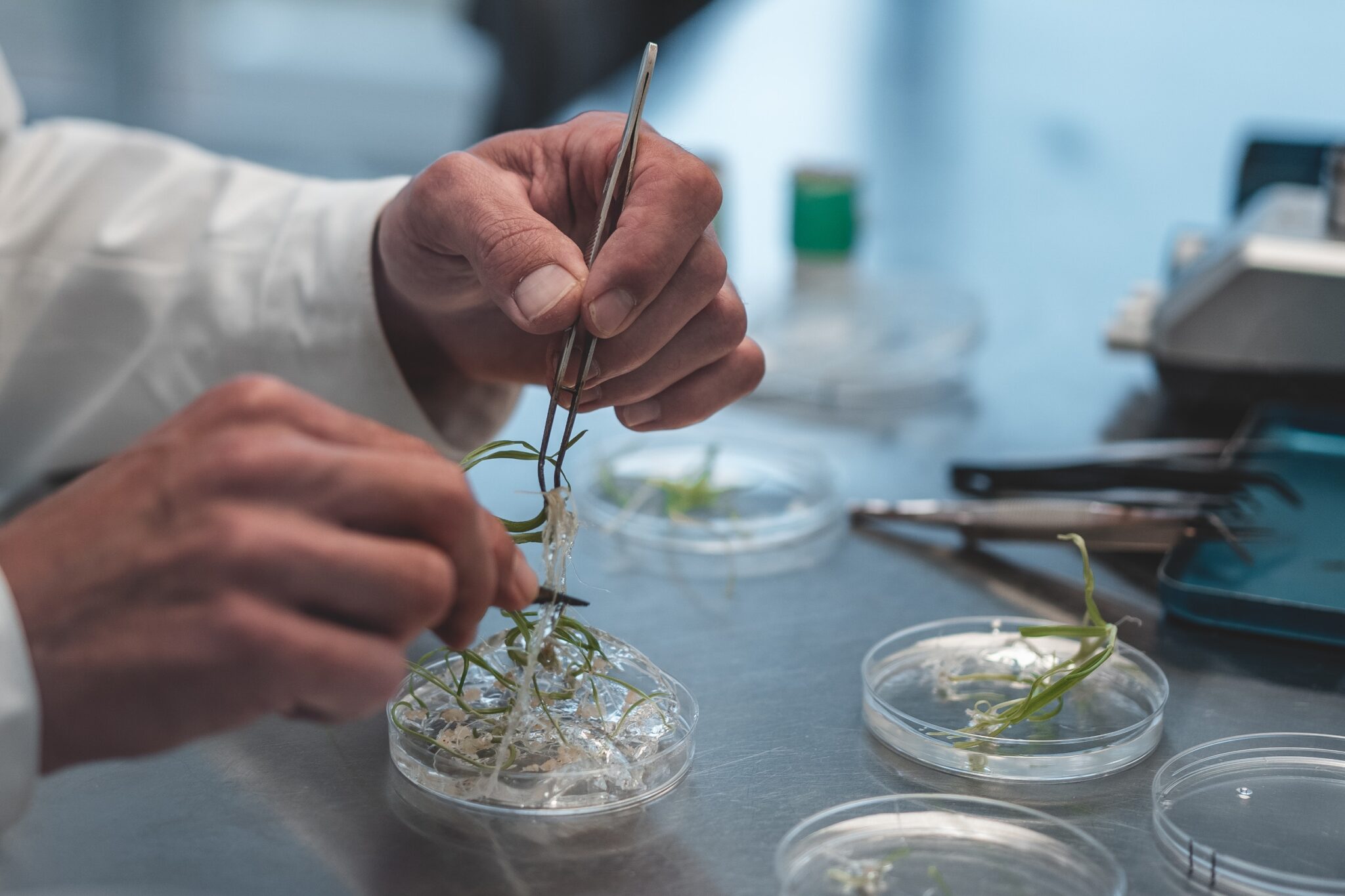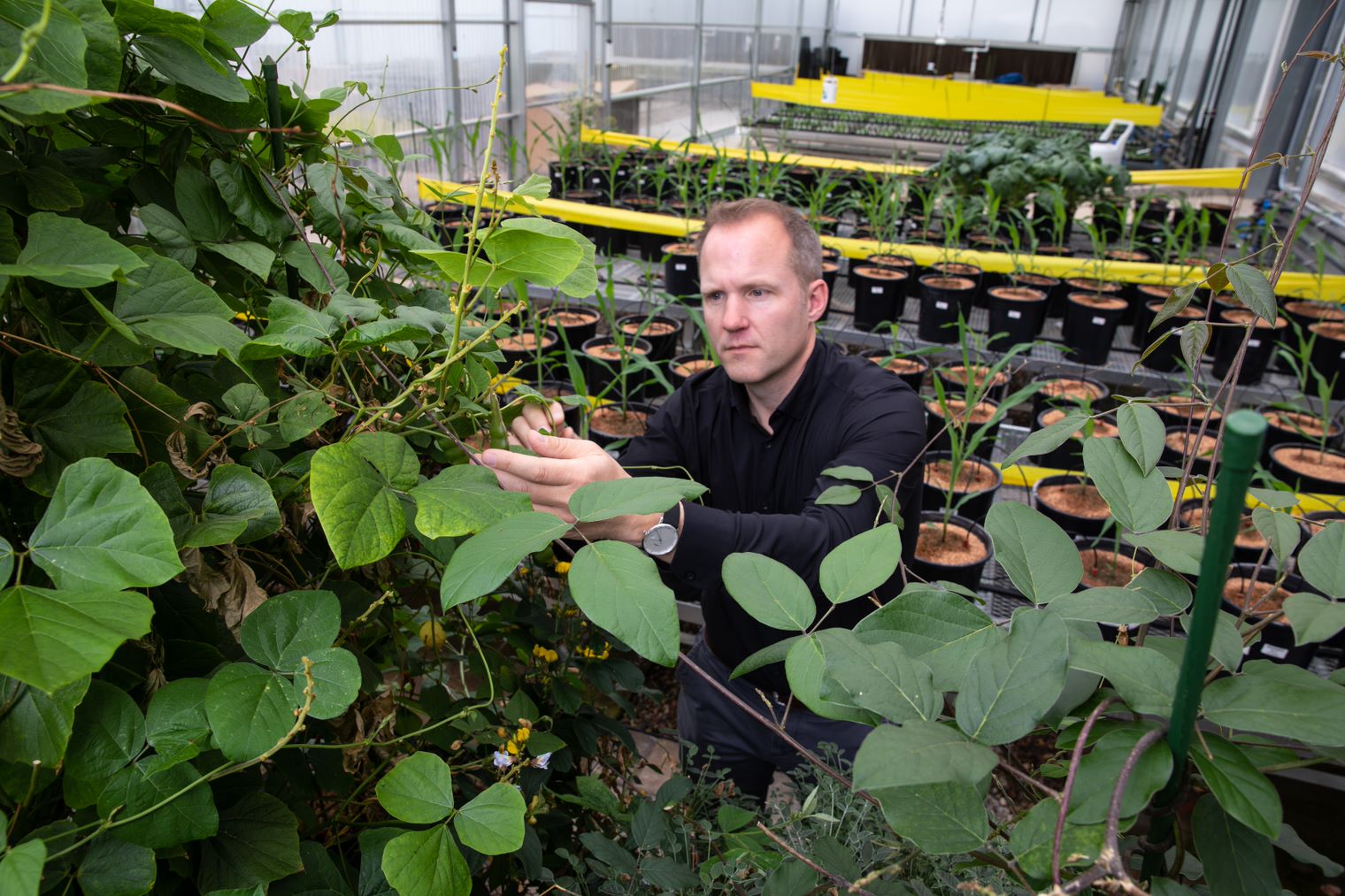Question: What is the most widely grown crop in the world? Wheat! Many different varieties of this crop are grown on a whopping 215 million hectares per year, which is traded for nearly US $50 billion-worth globally each year. Eaten by 2.5 billion people, it supersedes maize or rice as a source of protein in low- and middle-income nations and is second only to rice as a source of calories. But what about hybrid wheat? It has been tried and tested for almost 90 years, but large-scale adoption is yet to come.
The trouble is that wheat flowers are so-called perfect flowers, in the botanical sense, meaning they have both male and female parts, which typically leads to self-pollination. And because wheat is a self-pollinator, it makes developing hybrid seed extremely labor-intensive. Until now it was the high cost of producing hybrid wheat seed, in comparison to its moderate benefits, that have kept it from wide-scale adoption.
So, the trick is to make sure the mother line does not self-pollinate and in fact receives pollen from the intended father line. In the past, commercial hybrid wheat seed has been produced using chemical hybridizing agents, which are plant growth regulators that selectively interfere with pollen development. The other option is to use naturally occurring cytoplasmic male sterility (CMS) systems.
To find out where things stand with hybrid wheat development at the moment, European Seed spoke with Wolf von Rhade, President at ASUR Plant Breeding, Guillaume de Castelbajac, Managing Director at ASUR Plant Breeding, Marco Busch, Head of EMEA Breeding for Bayer AG – Crop Science Division, Tatiana Dimitriadi, European Marketing Manager for Hybrid Wheat at BASF, Sarah Iveson, Head of Seeds Development EAME at Syngenta and Rob Hiles, EAME Cereals Portfolio and Strategy Lead at Syngenta.

Past progress
All four of these companies have extensive history in the development of hybrid wheat (HW). In ASUR’s case, its main shareholder NORDSAAT had been working on HW since the 1950s, as had several other European wheat breeders and institutes, trying different hybridization techniques and developing some of its own, like SPLITGENE. In the 1990s, NORDSAAT partnered with HybriTech, providing key germplasm to create the first successful wheat hybrids produced with the Chemical Hybridizing Agent (CHA) Genesis (active substance clofencet). NORDSAAT had its first own hybrid HYBNOS1 listed in Germany in 1999.
When HybriTech ceased its operations in 2000 and discontinued Genesis, NORDSAAT took over the portfolio, which was mainly marketed in France, and handed it to ASUR. Being in France, ASUR was in a better position to continue marketing the portfolio, says von Rhade, and to produce seeds. ASUR also made an agreement with Hybrinova, a Dupont subsidiary at the time, to use Dupont’s CHA, CROISOR (active substance sintofen). A year later, when Dupont also stopped its HW operation, ASUR acquired it, along with CROISOR.
BASF has been dedicated to the development of HW for several years now. “Since we created our HW research platform,” says Dimitriadi, “we have been working closely with public and private organizations to ensure we understand their strategic priorities and key issues to ensure HW can deliver value to the entire value chain.”

Bayer had been active in wheat R&D for about ten years, until it divested its HW R&D activities to BASF as part of the acquisition process of Monsanto. “At the same time, we’ve been offering wheat growers a broad range of crop protection solutions,” Busch explains. “While it hasn’t been possible for a very long time to apply crop production improvement technologies that have been successfully deployed in other crops to wheat, technological progress has been made that should allow the industry to stepwise bring HW successfully to market. Our R&D collaboration with RAGT addresses exactly that opportunity.”
Present HW development strategies
Dimitriadi explains that over the past decade, BASF’s experience with HW and its relationships with its partners have enabled BASF to gather input from key stakeholders to guide the direction of its HW program. “BASF has made a long-term commitment to HW,” she says, “investing significantly in R&D as well as a dedicated team of experts around the world who focus exclusively on bringing HW to market.
Furthermore, new genotyping, phenotyping and envirotyping technologies along with molecular breeding techniques are now enabling commercially-viable production systems for HW.”

Busch echoes the thought that the powerful genomic tools now available are making it possible to tackle the genomic complexity of wheat.
He adds that leveraging the CMS system in the collaboration between RAGT and Bayer (experience with hybridization technologies and in other hybrid crops like corn) will result eventually in a reliable and cost-effective technology to produce HW.
Together, RAGT and Bayer will focus on an HW production system for growers in Europe.
Iveson shares that, following significant investments across EAME and NA in hybrid wheat since 2012, Syngenta is focused on delivering products with significant benefits to farmers. They do so by leveraging their broad germplasm base and cereal hybrid expertise to drive higher and stable yields with a reduced need for inputs, together with a scalable and reliable production system. Syngenta has successfully entered 4 hybrids in CTPS, the official French registration system over the past 2 years.
“Our primary objective is to achieve the technical milestones in the HW program and over time, consider other technologies,” says Busch, “like native traits for disease or drought tolerance, to further enhance value for the grower.”

For ASUR’s part, de Castelbajac says his firm will achieve HW development through its low-cost model. That is, ASUR is using CROISOR, the only authorized CHA in the world, to create hybrids quickly and without the expensive breeding program for female/male parents that is needed with CMS systems.
“Almost any elite line can be made male-sterile by one application of the CHA, and can be used as the mother line, leading to a new hybrid on the market after just five or six years,” he says. “We have agreements with most European wheat breeders to test their newly-listed lines and use them against a fee to create hybrids. The main financial burden is the high cost of studies needed to maintain market authorization for the CHA.”
Progress so far
The first hybrids developed by RAGT, and Bayer will be based on the same genetic system than the competition for which there is full ‘freedom to operate’ in terms of freedom from patent restrictions. Busch says using the CMS system has helped seed companies to advance work on HW and it’s especially seen as a base to overcome hurdles known in the area of efficient and economical seed production of HW seed.
De Castelbajac explains already over the last two decades, ASUR has created and marketed many wheat hybrids. “So far, HYSTAR, which we listed in 2009, has been the most successful wheat hybrid of all time,” he says. “With its incredible yield consistency under a diversity of climates, it has been sold in more than 15 different countries and is still popular. We have also succeeded in de-regulating sintofen, whose market authorization we expect to extend until 2034, and which we provide for R&D purposes to several breeders worldwide.”

Unfortunately, he adds, many hybrids are difficult and costly to produce, which has restricted their number. “During many years we worked hard to improve seed production in order to meet the demand, and we often frustrated clients because we could not supply enough seed, and of course there was no supplier other than us,” says de Castelbajac. “Our sales reached a high plateau between 2008 and 2014, thanks to attractive wheat prices and a continuous geographical expansion. Since then, lower commodity prices, an unlucky succession of climatic extremes, leading to consecutive years of low income for farmers and the increased use of farm-saved seed, has had a negative impact on our sales.”
However, thanks to some ‘new generation’ hybrids, easier and cheaper to produce, ASUR has started to shift its business model towards licensing, in order to reduce intermediation and logistics costs, as well as seed costs.
BASF, within the next few years, plans to bring ‘Ideltis™’ HW to the commercial market across Europe, where Dimitriadi says it will offer the greatest value to growers.
Seed production
“Syngenta is currently developing hybrids using the CMS hybridization technology following significant seed production knowledge gained from over 20 years’ experience thanks to the development of hybrid barley,” says Hiles. According to him, this should put Syngenta in a position to quickly deliver quality material at scale to wheat growers
Von Rhade notes that despite the fact that some of the main issues in HW development (e.g., the need to incorporate several restorer genes in the male parent) can now be solved thanks to technological progress, “for the time being and for maybe another decade, we still believe our CHA system is the best to create superior hybrids, even though seed production seems to be more costly. But we are ready to embrace any new seed production technology which will prove better, and we are investing in several of them.”
De Castelbajac explains that the HW supply chain will require a certain volume of high-quality seed stock, either for very early orders or to supplement insufficient new seed crops, but this has become a growing challenge with higher summer temperatures, rising energy costs and fewer insecticides. ASUR has therefore developed a vacuum-packing process (called SAFET’HY) that preserves stored valuable seed such as HW from germination losses or insect attacks. It is now offered to other seed companies by Tamia-Pack, a fully owned start-up which we created for that purpose.
Another development is pollen supplementation of the female in hybrid seed production. ASUR, Syngenta and the French public research institute INRAe (through a joint venture POLLINOVA), have patented a device to increase seed yield in hybrid production of cereals, corn and potentially many other crops.
Bayer has been using different technologies to bring new and innovative seeds to market, including hybridization, GM technologies and now also gene editing technologies. Busch gives an example of Bayer’s development of a short-stature corn in three different ways (classical breeding, biotechnology and gene editing technology), which allows for tailored solutions to the grower’s region and regulatory environment. “Another example for state-of-the art breeding is the unique Marana Greenhouses in Arizona, US, which serves as a global product design center for corn,” says Busch. “By bringing the breeding process indoors, more seed products can be developed faster, resulting in farmers benefitting from the latest technology.”
[tweetshare tweet=”By bringing the breeding process indoors, more seed products can be developed faster, resulting in farmers benefitting from the latest technology. ” username=”eyJtZDUiOnRydWV9″]
BASF uses the CMS process of hybridization for the multiplication of commercial hybrid seeds, which is a natural process originating in wild wheat, uses no chemicals and produces large quantities. “There are several HW hybridization techniques,” notes Dimitriadi. “We use similar seed production method as those used to produce other hybrid seeds like oilseed rape and corn. At BASF, we have chosen to use the three-line system without using hybridization agents: the female parent, the maintainer (which we use to reproduce the female lines) and the male parent.” She adds that we are producing wheat hybrids that can be grown and harvested using the same equipment and infrastructure farmers have already invested in.

Looking forward
Busch notes that wheat yields in Europe can be very different between countries and climatic zones, ranging from, for example, about 4 tons/ha in Ukraine to about 8 tons/ha in the U.K. “Compared to open-pollinated varieties, the yield benefits of hybrids can be also very different according to stress conditions as hybrid benefits are stronger under stress,” he says. “In addition, the benefit of hybrids is not only about yield, but also stability (that is, yield insurance against adverse conditions) and sustainability (reduction of inputs). With hybrids, we are going to develop a new agronomical system for wheat, with the focus being broader than yield only and the offering also broader than seed only (including other inputs e.g., plant protection, services, digital advice).
Syngenta launched X-TerraTM wheat to the French growers earlier this year. Hiles says “We aim to deliver a flow of innovating products, improving every year, which will help reduce the need for pesticides and fertilizers, assisting growers’ efforts for better soil management and water conservation whilst meeting the ambitions of the Green Deal”.
Iveson confirms that X-TerraTM wheat “used in conjunction with data analytics, and precision farming techniques, aims to deliver better efficiency with higher consistent yields, maximizing returns for farmers”.
Busch adds that Bayer sees great potential in HW to provide wheat growers with a crop production system that is resilient to the impacts of adverse weather and disease. “This will enable a more stable income for farmers,” he says, “and ultimately increase their potential profitability.”
Dimitriadi reminds us that wheat is critical to global food security, representing around 20% of global calories and is a crucial and wholesome source of fiber, protein, vitamins and minerals. She notes that to feed our growing population, the wheat supply must increase by 50-60% by 2050, and the marketplace needs breakthrough innovation to meet this growing demand in a sustainable way.
“That’s why we are so focused and adamant about bringing this innovation to market – the world needs HW!” Dimitriadi says. “With Ideltis™, we aim to become the leader in customized agronomic solutions for hybrid wheat. We are excited to bring high-performing HW to the market to unlock wheat’s full potential and advance one of the world’s most important crops, for today’s wheat farmers and for generations to come.
[tweetshare tweet=”Wheat is critical to global food security and that’s why we are so focused and adamant about bringing hybrid wheat to market. ” username=”eyJtZDUiOnRydWV9″]
Von Rhade and everyone at ASUR continues to be convinced of the value of hybrids for wheat farmers to obtain more consistent yields, especially in stress conditions such as drought or waterlogging or low-fertility soils, which will be of growing importance with climate change and less pesticide or fertilizers.
“We are glad that several seed companies have realized this and are now working hard to join us,” he says. “When this happens, there will be a market increase, undoubtedly. Hybrids will likely become a significant part of the wheat seed used by European farmers, besides conventional lines and farm-saved seed.”













